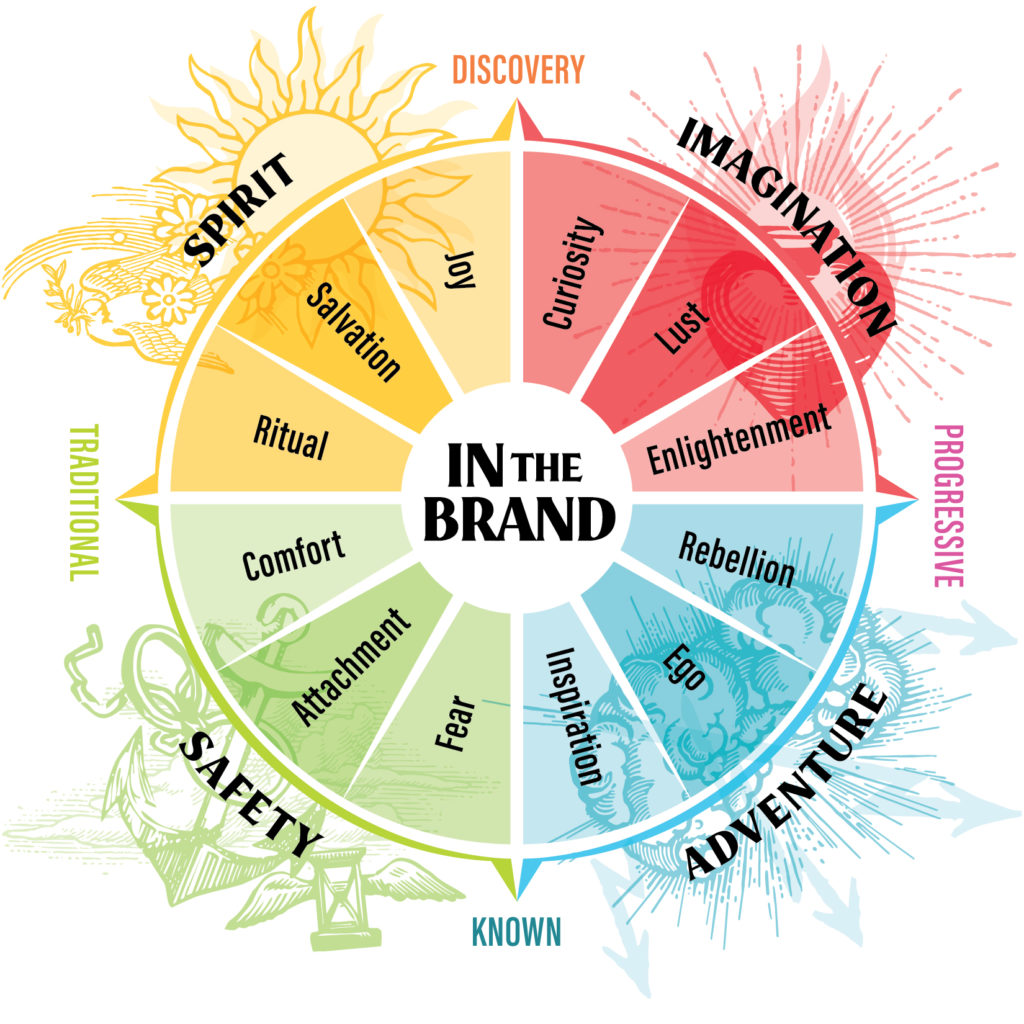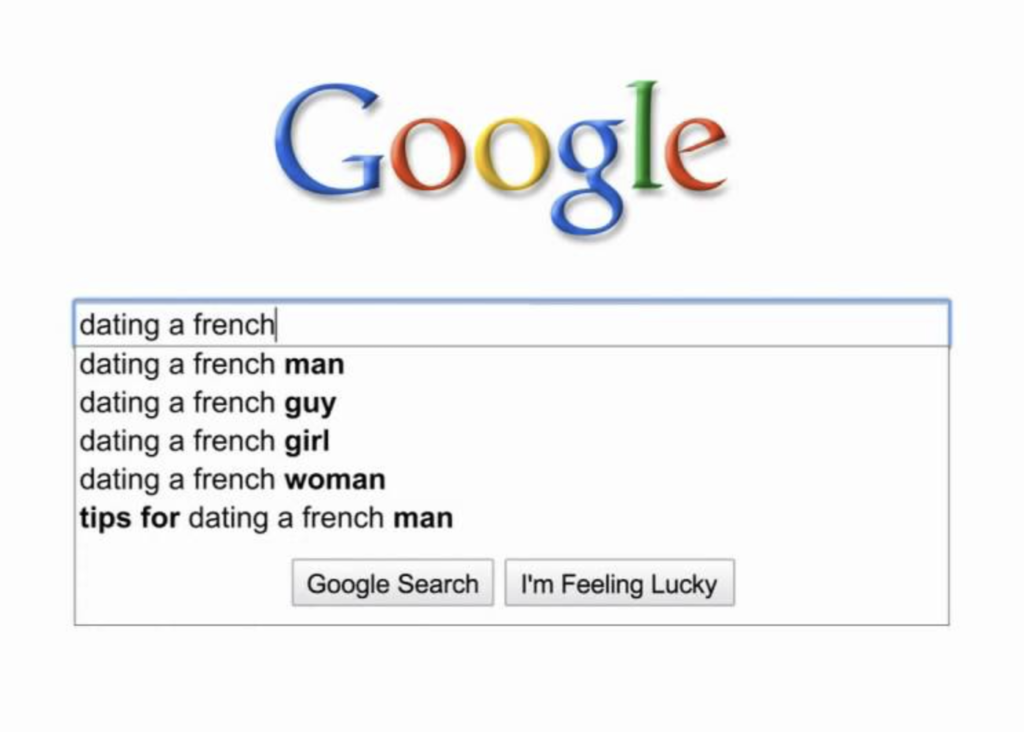
Brands are selling more than just products and services. They’re selling us states of being.
Brands create atmospheres through written and visual communication, playing on our hopes, dreams, and fears to make us care. When brands make us feel, brand interaction is elevated from a simple transaction to a memorable experience.
There’s a whole range of feelings that brands play on. Whether they thrill us, delight us, or inspire us, brands are carefully engineering a particular response. This month, we’re looking at brands that spark our imagination. What are Imagination Brands and how do they use emotions to draw us in?

Imagination: the faculty or action of forming new ideas, or images or concepts of external objects not present to the senses.
Imagination brands give a sense of possibility, novelty and change. They invite us to rethink our opinions, discover new experiences and create different realities. With imagination brands, anything is possible.
On the Brand Feel Wheel, the Imagination Quadrant exists on the Discovery-Progressive side of the Perception Axes. Brands in this quadrant provide a new experience with a progressive position.
>Imagination Brands offer novel products and services that forge new markets and new industries.
>They’re doing something never seen before or so different from the existing market landscape that it becomes a distinct category.
>Imagination Brands are progressive companies, seeking to disrupt the status quo. They don’t follow the pack. They ask us to imagine a different way, world or future– then show us how to make it real.
Because they combine the new with the progressive, Imagination Brands are often innovators.
>Innovators are companies that create new offerings, or rethink the very premises that their industries stand on to create an irrevocable shift.
>They are aligned with the disruptors in the Adventure Quadrant, but with a key difference. Disruptors take an existing, known experience and do it better. Innovators are first movers, mavericks. They’re giving us experiences we’ve never had before.
>Some famous Imagination Brands that have innovated the way we live, work and play: Apple, Google, Nike, Impossible Foods, Instagram, SpaceX, Peloton, DJI.

Imagination Brands play on our dreams and desires. They ask us to rethink the possible, leading us into uncharted territory and new dimensions. They do this by tapping into three main emotional motivators: curiosity, lust, and enlightenment. When we engage with Imagination Brands, we’re engaging with a world of opportunity and novelty. It’s exciting, sexy, transformative.
Successful Imagination Brands correlate their product or service with achieving a desired feeling, providing an emotional incentive that proves much more powerful and memorable than the offering alone. Let’s look at three examples of campaigns created by Imagination Brands that play on these powerful emotions.
1. Curiosity: The Constant Search
What it is: The desire to know or learn something.
Why brands use it: Humans by nature are curious. It’s part of what sets us apart from other animals. It’s a universal motivator, making it highly effective. Curiosity is also a powerful incentive for action– when we want to know, do or see something, we’ll go out of our way to satisfy our interest. If brands can pique our curiosity, we’ll keep coming back for as long as they can hold our attention.
How to tap into it: Brands that play on curiosity usually seek to satisfy our constant search for answers. They’ll take us to new places or expose us to new information. They pose themselves as bearers of knowledge who help us on our journey for whatever we’re looking for.
EXAMPLE:
Brand: Google
Campaign: Parisian Love
Google has built their brand around the concept that information is powerful. When we have the tools to ask questions and access information, we can create a different, better world. Google’s tagline, “Search On,” is a brilliant idea that poses Google as our collaborator, our guide, and our champion in the pursuit of possibilities.
Their 2009 Superbowl ad “Parisian Love” showcased their use of curiosity as a motivator for brand engagement and loyalty. The ad tells the story of an American and Parisian falling in love told entirely through search questions, from “how to impress a French girl” to “how to assemble a crib.” The story tugs at our heartstrings, telling us that our curiosity is the driving force of experience. It poses Google as much more than a search tool– it’s how we make our dreams into reality.
2. Lust: Tap Into Your Deepest Desires
What it is: Having a strong desire for something or someone.
Why brands use it: Everyone knows the cliche “sex sells”. Because it taps into some of our most basic human desires, lust is an incredibly powerful motivator. Often playing with taboo and rebellion, brands that use lust are usually very memorable. It’s a way to make a big impression.
How to tap into it: Brands using lust typically promise us a kind of transformation. Engaging with their product or service will render us more desirable, helping us fulfill our true potential. But lust can be controversial. Brands must recognize the risks and use this motivator in a way that resonates with their audience.

EXAMPLE:
Brand: Axe
Campaign: The New Axe Effect
The men’s fragrance company Axe has undergone a major rebrand in the last few years. Axe became known initially as a brand that was all about lust. Their early ads showed “The Axe Effect,” in which beautiful women were unstoppably attracted to average looking guys once they sprayed themselves with Axe. It sold a dream of transformation to their audience– use this perfume and women will find you irresistible.
But times have changed. Axe has repositioned themselves as a much progressive company, one that’s about desire in all its forms. “We’re a brand that’s all about attraction,” they write on the website. “We know that we didn’t always get it right in the past, but we are trying to move on from that. It’s pretty simple really: We believe in inclusivity, mutuality and progress.” The newest campaign, “The New Axe Effect,” shows this updated direction. After using Axe body spray, a guy enters into a dream world in which men, women, and animals fall in love with him. The psychedelic trip communicates that using Axe opens up a new world of possibilities where life is full of attraction.
3. Enlightenment: Change Your Mind
What it is: The action or state of having achieved knowledge or insight.
Why brands use it: Brands using enlightenment are often trying to change preconceptions or dispel culturally ingrained notions. Because they are bringing audiences over to their side, they offer a sense that people who are aligned with them are special and in the know. Enlightenment can thus inspire deep brand loyalty.
How to tap into it: Brands using enlightenment typically position themselves as answers to complicated questions by looking at a problem in a totally new way. They use elements of surprise to make us rethink our judgements and biases.

EXAMPLE:
Brand: Impossible Foods
Campaign: We Are Meat
Impossible Foods is on a mission to rethink the meat industry as we know it. Committed to being just as good as real meat, they want to change the way we eat to save the planet. From their name– Impossible Foods– to their tagline “meat made from plants,” you know right away this is something you’ve never seen before.
Impossible has built a brand that’s totally distinct in the plant-based protein market. Their whole idea is that they’re as good as meat. Not just for vegetarians, they’re trying to change the minds of die-hard meat lovers. Their recent campaign “We Are Meat” features close up shots of Impossible burger patties, with a narrator talking about how delicious meat is. The concept is that once meat lovers taste it, they’ll change their preconceived notions about where meat comes from. With Impossible, meat comes from plants. It’s sold as such an enlightening experience that it piques your interest, drawing in a much wider audience.


After decades of branding for hundreds of clients, we’ve created a graphic representation of how brands use emotions to make their way into our hearts and minds.
We call it the Brand Feel Wheel. Locating brands on the wheel allows us to take a deep look at how today’s most influential companies are shaping our consciousness.
The most influential brands are able to communicate more than the goods they’re selling. They’re offering us something far less tangible and yet much more powerful: a feeling. They play into our base human desires, influencing our every move.
All brands have the potential to resonate on this deeper level. But it requires a clear understanding of who you are, what you believe and what you represent. Locating your brand on the Feel Wheel helps you draw out these big ideas, providing a rich set of emotions that can be used to inspire loyalty, action and memorability. Next month we’ll explore another Feeling Quadrant and dive deeper in the brand.
Are you an Imagination Brand? We’d love to find out.
